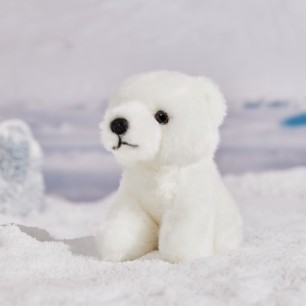Magnificent polar bears depend on Arctic Sea ice to hunt and raise their young. But the ice is shrinking.
Your adoptions will help protect polar bears in the Arctic and help fund our other vital work around the world. When you choose an animal adoption, you are supporting both your chosen animals as well as wider work to help bring our world back to life.
Adopt a polar bear and receive
Polar bears generally live and hunt alone, though they can be quite social. They mainly eat seals; polar bears have such a remarkable sense of smell that they can detect a seal swimming in the water – below a metre of compacted snow – up to a kilometre away.

Threats that polar bears face

CLIMATE CHANGE
Climate change is the single greatest threat to polar bears as they are uniquely adapted to live on sea ice, and that ice is disappearing.
OIL AND GAS EXPLORATION
As sea ice declines, the Arctic is opening up to oil and gas exploration and increased shipping which may affect the delicate balance of the Arctic ecosystem.
HUMAN BEAR CONFLICT
Hungry and curious polar bears may stray into villages, leading to conflict between people defending themselves and their families.

POLLUTION
Toxic chemicals and pollution in the marine environment increase in toxicity as they move up the food chain - and polar bears are the top of the Arctic food chain.
How We Can Help
We need to minimise the warming that’s melting the polar bear’s habitat: sea ice. To do this we’re working to help cut global greenhouse gas emissions and encourage the switch to renewable energy.
We fund research that aims to further our knowledge and understanding of polar bear populations, and how they could respond to changes in their environment.
Your adoption and support will help us:
- monitor polar bear movements, health and population sizes
- maintain a healthy Arctic environment with undisturbed ecosystems and healthy wildlife populations
- raise awareness of the threats of climate change that we all face
- work with communities to help reduce human-bear conflict
- fund our other essential work around the world

Last minute gift?

Free delivery
We offer free delivery but ask you to consider helping to cover postage with an optional £3 donation taken at checkout. This means more of your gift can go towards supporting your adoption animal and our wider work.
Your pack will be sent within 2-3 working days - but allow up to 5 working days for it to arrive.
Want to protect other marine animals too? Check out our adopt a marine animal page to find out more.















